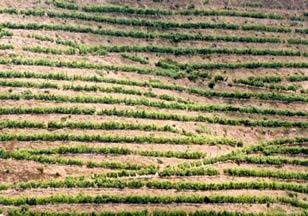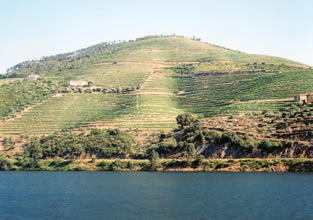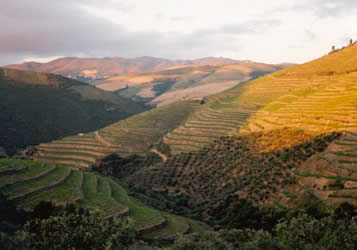
|
The
Douro wine revolution (...continued from part 1) Because of the economic importance of the port trade, table wines from the Douro have traditionally come a very distant second to port. Other than this historical artefact, though, there’s no reason why the Douro couldn’t produce world class table wines on a significant scale. The seeds for the current table wine revolution lie back in the 1940s, when Fernando Nicolau de Almeida, an oenologist with Ferreira, had a dream. He visited Bordeaux during the war and returned determined to produce a top quality table wine.
These were Touriga Nacional, Tinta
Roriz, Touriga Franca, Tinta Cão and Tinta Barroca. This work led to
the development of Ramos Pinto’s flagship wine, Duas Quintas Reserva.
If you add to this list Tinta Amarela and Sousão (a ‘teinturier’
variety, i.e. with coloured flesh), and you have the seven grapes that
have been the focus of recent planting activity. Many of the very
important older vineyards, however, contain a more-or-less random mix
of as many as 30 different varieties. It’s a happy state of
confusion.
At the forefront of this movement is
Dirk Niepoort, who has added three exciting new table wines to his
portfolio in the last couple of years.
The Douro is currently an exciting place to be. A critical mass of
producers has emerged who are passionate about making the very best
wines their exceptional terroirs are capable of. Best of all, they are
talking to each other and tasting each others’ wines, which can only
help with progress. But it’s still early days and there’s still
lots to be learned about making the very best Douro wines. I will be writing up my trip in a number of stages, beginning with
a dinner in London and culminating in an exhaustive tasting of wines
from many of the key producers held on the last night of my visit. By
the end, I hope you’ll have at least a grasp of the current
situation here, and an appreciation of why I was so enthused by my
visit. |



